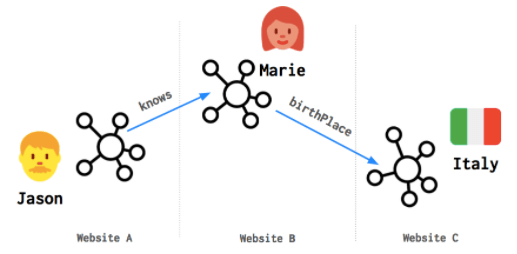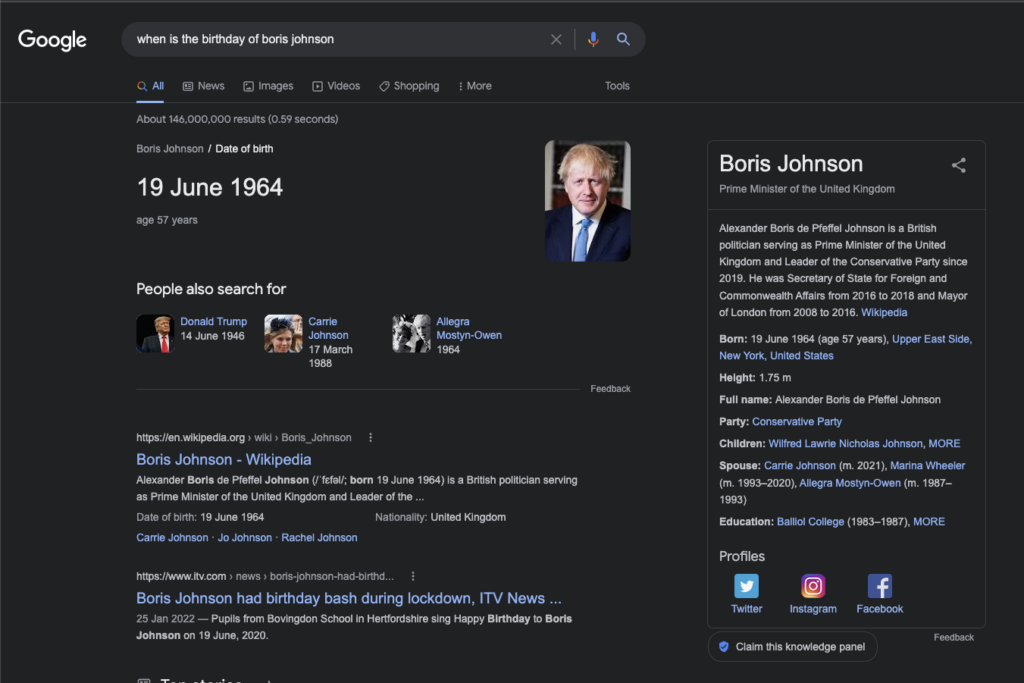What is linked data?
In a nutshell
Linked data is structured data that usually takes the form of a graph where you have uniquely identifiable nodes that represent entities (e.g., User, Book, Article) and each node contains link to other nodes. Something like this:

What’s the benefit of linked data?
Linking data by using data formats such as JSON-LD helps you create a knowledge graph. Graph-like data structures unlock more data analysis capabilities.
A computer can be programmed to traverse / crawl through the graph to build sophisticated knowledge models of each node or to answer questions that require aggregating the data of a large number of nodes.
For example, suppose there was a huge database that represented every human on this planet as a node that looked something like this:
{
"id": "johndoe-120793-140000-london-king-george-hospital",
"name": "John Doe",
"location": "some-location-id",
"spouse": "some-spouse-id",
"cars": ["some-car-id"],
"paymentTransactions": ["some-payment-id", "some-payment-id"]
}With this sort of graph in place, you could answer all sorts of questions like:
- How many people live in London?
- How many people in London are married?
- What percentage of married men have a car?
- What type of car is most common for a father?
- How does the sales of men’s perfume in London change throughout the year?
For example, Google uses its Google Knowledge Graph to enhance its search engine results, target its ads more effectively at people who are more likely to be interested in the ad, answer questions in Google Assistant, and so on.
For example, try Googling for:
Chances are that Google uses its knowledge graph to return the answer right at the top of the search results page as well as the “knowledge panel” to the right.

So in a nutshell, linked data gives us the potential to use the power of computers to perform more in-depth data analysis.
Sources
Thanks for your comment 🙏. Once it's approved, it will appear here.
Leave a comment